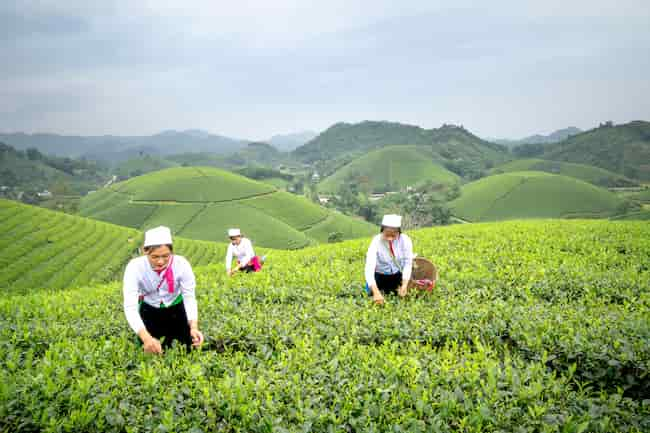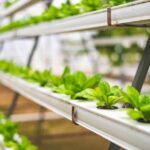What Is Vertical Farming India?
Vertical farming is a type of agriculture where crops are grown in vertically stacked layers in a controlled environment. India is one of the countries where vertical farming is slowly gaining popularity due to the advantages it offers.
Some of the benefits of vertical farming include increased yields, reduced water usage, and less land required. Additionally, vertical farming can be used to grow crops in places where traditional farming methods are not possible or practical, such as in urban areas or on rooftops.
What is the background of vertical farming?
Table of Contents
The concept of vertical farming was first proposed by Dr. Dickson Despommier, a professor of environmental health sciences at Columbia University, in the early 2000s. Despommier believed that vertical farming could be used to address many of the world’s food security issues, such as hunger and malnutrition.
Vertical farming is still a relatively new concept, and there are currently only a handful of commercial operations in existence. The majority of vertical farms are located in the United States, but there are also a few in Europe and Asia. India is one of the countries where vertical farming is slowly gaining popularity due to the advantages it offers.
What is the benefit of vertical farming?
There are several benefits of vertical farming, including increased yields, reduced water usage, and less land required. Additionally, vertical farming can be used to grow crops in places where traditional farming methods are not possible or practical, such as in urban areas or on rooftops.
One of the biggest advantages of vertical farming is that it can help to increase crop yields. This is because crops are grown in a controlled environment where they have access to the ideal amount of light, water, and nutrients. Additionally, pests and diseases are less likely to affect crops in a vertical farm than in a traditional field.
How much does vertical farming cost in India?
The cost of vertical farming varies depending on the size and scale of the operation. Additionally, the cost of setting up a vertical farm will vary depending on the location and climate.
In India, the cost of setting up a small vertical farm is approximate Rs. 10 lakhs (US$14,000). For a larger operation, the cost can be upwards of Rs. 1 crore (US$140,000).
What are the challenges of vertical farming in India?
One of the challenges of vertical farming in India is that it is a relatively new concept and there is still some skepticism about its viability. Additionally, vertical farming requires a significant investment of capital, which may deter some farmers from adopting this type of agriculture. Additionally, the lack of qualified personnel presents another challenge for vertical farmers in India.
Despite these challenges, vertical farming offers several advantages that make it an attractive option for Indian farmers. These advantages include increased yields, reduced water usage, and less land required. Additionally, vertical farming can be used to grow crops in places where traditional farming methods are not possible or practical, such as in urban areas or on rooftops.
What countries use vertical farming?
The majority of vertical farms are located in the United States, but there are also a few in Europe and Asia. India is one of the countries where vertical farming is slowly gaining popularity due to the advantages it offers.
What are some examples of vertical farms in India?
Some examples of vertical farms in India include:
1. Agrimaster Farms: Agrimaster Farms is a hydroponic farm that produces leafy greens, herbs, and microgreens. The farm is located in Bangalore, Karnataka.
2. Good Earth Organics: Good Earth Organics is an aquaponic farm that produces vegetables, fruits, and fish. The farm is located in Pune, Maharashtra.
3. Urban Organics: Urban Organics is a hydroponic farm that produces leafy greens and herbs. The farm is located in Mumbai, Maharashtra.
4. Vedic Farms: Vedic Farm is an aquaponic farm that produces vegetables, fruits, and fish. The farm is located in Bangalore, Karnataka.
5. Vertical Farming Systems: Vertical Farming Systems is a hydroponic farm that produces leafy greens, herbs, and microgreens. The farm is located in Chennai, Tamil Nadu.
What are the disadvantages of vertical farming?
The disadvantages of vertical farming include the high initial investment required, the lack of qualified personnel, and the need for a controlled environment. Additionally, vertical farms are susceptible to power outages and water shortages.
What are some disadvantages of hydroponics?
The disadvantages of hydroponics include:
1. The high initial investment required.
2. The need for a controlled environment.
3. The lack of qualified personnel.
4. The susceptibility to power outages and water shortages.
5. The lack of organic matter in the soil.
6. The need for chemical fertilizers and pesticides.
7. The possibility of contamination by bacteria and fungi.
8. The possibility of root rot.
9. The need for pruning and trellising.
10. The possibility of crop failure due to disease or pests.












